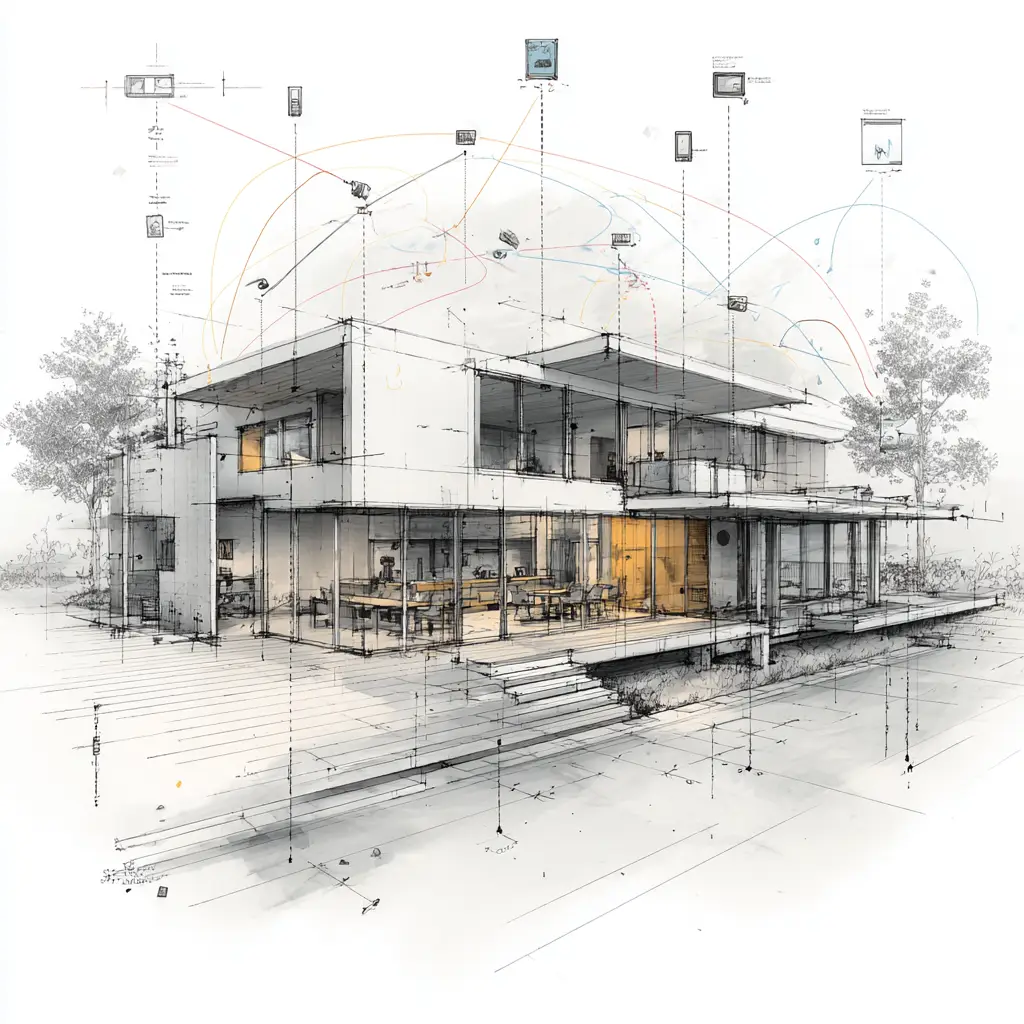For many of us, the smart home experience begins and ends with an app on our phone or a voice command to a smart speaker. We interact with devices that rely heavily on the internet, sending our commands and data to distant corporate servers. This Service Home model, promoted by major technology corporations, promises unparalleled convenience and effortless automation. But what happens when that internet connection drops, or when the company decides to change its terms, or worse, cease operations?
As we’ve seen in previous posts, relying on a third-party cloud for core functionality introduces significant vulnerabilities: frustrating latency, unpredictable reliability, and the alarming risk of your expensive hardware becoming bricked if a service is discontinued. Beyond these functional risks, there’s a deeper, more insidious cost: the erosion of personal privacy, as your data becomes raw material for a company’s business model.
This precarious illusion of convenience highlights a fundamental crossroads in the smart home market. Fortunately, there’s a different path, one championed by The Thinking Home philosophy: Local Control.
What is Local Control?
Simply put, a smart home built on Local Control operates its intelligence entirely within your own walls. Instead of commands traveling across the internet to a corporate cloud and back, all data processing and automation logic reside on a central hub or server physically located in your home. This architectural choice fundamentally redefines ownership and performance.
Here’s why Local Control is the essential foundation for a truly smart and sustainable home:
- Unmatched Speed: Without the need for round-trips to distant servers, commands execute instantly. Lights turn on the moment you enter a room, and automations respond without noticeable delay. User-reported tests show cloud-dependent systems can sometimes have 4-5 second lags, while local systems achieve sub-second response times. This difference makes your home feel truly responsive and intuitive, rather than sluggish.
- Unwavering Reliability: Your smart home’s core functions continue to work perfectly even if your internet connection goes down. This immunity to external network outages means your lights, climate control, and critical security systems remain operational when you need them most. 46% of smart home device failures are attributed to Wi-Fi and internet connectivity problems – a risk entirely bypassed by local control.
- Absolute Privacy: With local control, your sensitive data – from voice commands to video feeds and occupancy patterns – never leaves your home. This architecturally solves the privacy problem, keeping personal information securely within your domain and out of corporate databases that can be vulnerable to breaches or used for targeted advertising.
The philosophy of The Thinking Home extends this concept further with Intelligent Sovereignty. This isn’t about digital isolationism, but about smart risk management. It prioritizes keeping mission-critical and highly sensitive functions (like security, climate, and lighting) strictly local. However, it also allows for the strategic and secure use of cloud services for non-essential enhancements , such as leveraging a powerful cloud-based voice assistant for superior natural language processing. Intelligent Sovereignty dictates that cloud-based services are utilized only where the benefits clearly outweigh the trade-offs in privacy or reliability. This balanced approach ensures you maintain ultimate control without sacrificing desired features.
By embracing Local Control, you empower yourself to build a smart home that is truly reliable, inherently private, and genuinely intelligent – a system that works for you, on your terms.
Next, we’ll delve into how Intentional Planning can help you save money and avoid frustrating mistakes by designing your smart home before you buy a single device.

